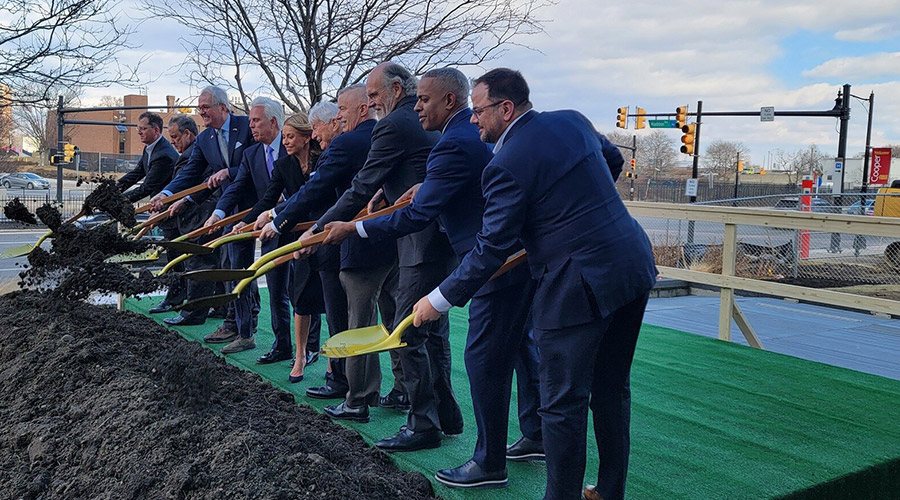Building owners and facility managers are often confronted by a difficult choice when it comes to their HVAC systems: Do I continue to absorb recurring high maintenance costs on my chillers and A/C units, or do I buy an entirely new HVAC system? The decision is easy if the equipment is old and inefficient, as new chillers and roof-top units (RTUs) are so efficient today, a reasonable payback period is the norm. An alternative to replacing the entire chiller or HVAC unit is upgrading those system components that are causing the most downtime and consuming the most power.
Compressors, pumps and fan motors are mechanical devices and, therefore, susceptible to failure over time. Among these, compressors consume the most energy. By replacing a failed compressor with a rebuilt model, the system cannot take advantage of the latest high efficiency technology in the market. There is a reason that chiller and RTU manufacturers converted their reciprocating compressor based models to scroll and screw compressors back in the ‘90s. They’re more reliable and more efficient. Upgrading old systems with the latest compressor technology is now commonplace.
One major mechanical contractor in California has upgraded numerous built-up DX systems by removing an old open-drive reciprocating model with a screw compressor that is optimized for the application. They select a model that meets the load requirements and, in virtually every case, the motor HP of the screw compressor is reduced by 20 – 30 percent. One job they did on a pair of medical office towers in Los Angeles qualified for a $250,000 utility rebate.
Variable speed drives for use with scroll compressors, pumps and fan motors offer another upgrade option that will significantly reduce energy costs. In many states, power companies offer rebates for VSDs that helps to justify the upgrade. Chillers and RTUs run at full load a small percent of the time they are operating, so running equipment that is designed for part load operation is the goal.
AHRI refers to this performance characteristic as the Integrated Part Load Value (IPLV) of a chiller that provides capacity modulation. The IPLV is calculated by measuring the efficiency of the chiller at 100 percent, 75 percent, 50 percent and 25 percent load. AHRI created a benchmark standard for calculating IPLV so chiller manufacturers could rate their equipment against each other. In their formula, a chiller only operates at full load 1% of the time. It operates at 75 percent capacity 42 percent of the time, 50 percent capacity 45 percent of the time, and 25 percent capacity 12 percent of the time. While systems are generally sized to the maximum possible load on the building, it is obvious that equipment be capable of efficient performance at part load.
Building owners and facility managers also need to understand their refrigerant options. Most old systems use R22 refrigerant, which has become quite expensive since the EPA banned its usage in new OEM equipment. Some contractors will recover and reuse the R22 from the system while others prefer R407C as an alternate R22 replacement. If changing to R134a or R410A, things get more complicated (expensive), as most of the system components will need to be upgraded.
Regardless of the refrigerant selected, the installing contractor should include liquid and suction line filter dryers in the retrofit installation. Expansion valves should also be checked and replaced with EXVs if needed. In screw compressor retrofits, it is advisable to do a complete oil change after 7 – 10 days of operation to ensure that the system is clean. An oil sample should be analyzed to ensure there is no moisture, acid or particulate matter in the system.
All things considered, retrofit upgrades offer Building Owners and Facility Managers an option they may not have known existed. For the fraction of the cost of a new chiller or A/C system, they can upgrade their current units with new high efficiency compressors, variable speed drives and alternate “Green” refrigerants. With a good Preventive Maintenance program, an upgraded system should provide many years of reliable comfort cooling with significant energy savings.
David Sylves is the director of marketing for BITZER U.S., Inc. located near Atlanta, Ga. He can be reached at dsylves@bitzerus.com. For more information, visit www.bitzerus.com.

 Aligning Construction and Facility Activities to Minimize Problems
Aligning Construction and Facility Activities to Minimize Problems Cooper University Health Care Breaks Ground on 'Project Imagine'
Cooper University Health Care Breaks Ground on 'Project Imagine' 3 Employees Injured by Patient at Halifax Infirmary's Emergency Department
3 Employees Injured by Patient at Halifax Infirmary's Emergency Department How Architects Shape the Future of Healthcare Facilities
How Architects Shape the Future of Healthcare Facilities UNC Health, Duke Health Form Partnership for Stand-alone Children's Hospital
UNC Health, Duke Health Form Partnership for Stand-alone Children's Hospital